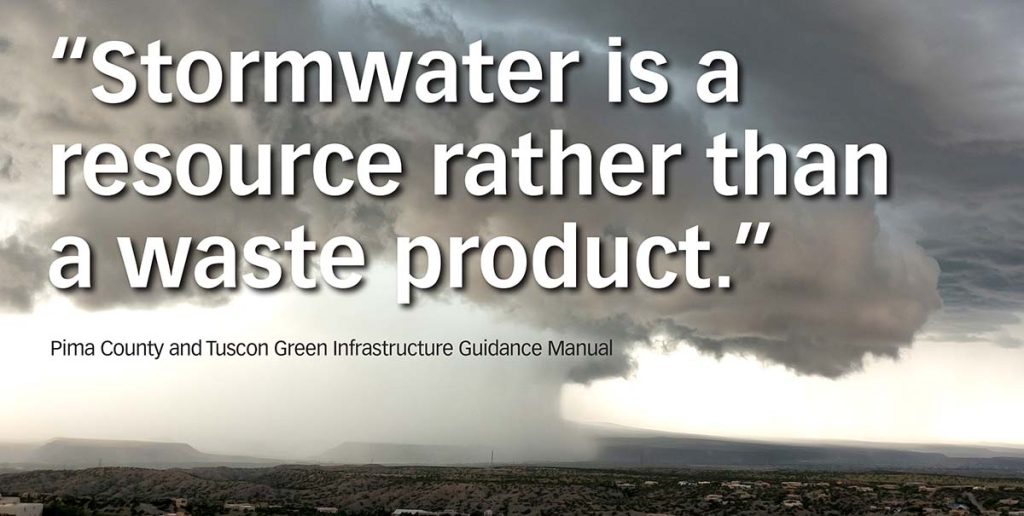
“Green Infrastructure is a new term for an ancient idea. For millennia, humans have known that survival depends on effective management of freshwater resources. Working with natural water systems yields healthy crops, plentiful hunting and fishing, flood-free homes, and clean drinking water. However, the balance was disrupted by nineteenth century industrial revolution ideology which sought control of systems (including water systems) for maximum efficiency, commodification, and profit.
Particularly after the Second World War, the quest for efficiency and control led to the containment of stormwater in concrete pipes and channels. This approach concentrates pollutants and increases flow velocity, both of which cause significant damage to natural waterways… Green Stormwater Infrastructure (GSI) practices seek to reconnect water to the land, use natural systems to filter pollutants and decrease velocity, and create a healthy environment for humans and other species.” (1)
Practices to manage stormwater differ, from areas of high rainfall to those with little such as the arid to semiarid mid Rio Grande. Tucson is a comparable municipal area which has adopted a GSI approach to water management. This began as grassroots actions over 20 years ago and is now driving land development policies to use water as close to where it falls as possible to support the natural landscape. GSI practices may be more important in arid and semiarid areas according to research modelling done in Salt Lake City.
The Environmental Protection Agency (EPA) is now requiring certain features of GSI in their permitting. However, in the mid Rio Grande, there are over 20 agencies overseeing and providing permits for various aspects of water quality and quantity (Federal, State, regional, municipal, and tribal). This is a major barrier to an overall plan. Then again, since this region has varied geographical features and ‘prior water rights,’ it allows decisions to be made by smaller populations in unique areas of our watershed.
The EPA Hydrologic Cycle purports that if GSI practices using trees and ground covers are in place, runoff is reduced to 10%. Compare this to 55% runoff in areas with mostly impermeable surfaces like pavement. When this water resource goes down the storm sewer, our community’s potable water use continues to be higher than it needs to be. We are, in essence, wasting drinking water.
What can we do in our yards, neighborhoods, and city-wide?
Continue reading
